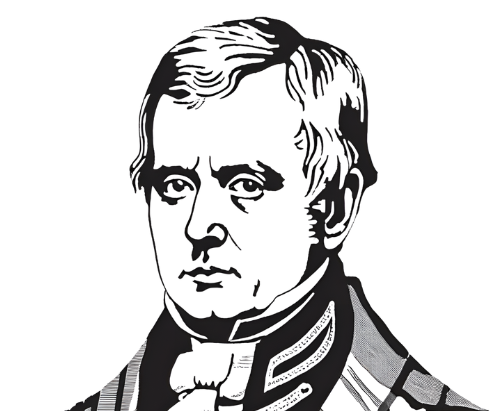His impact on literature, tourism and Scottish identity remains profound to this day.
Born in Edinburgh, Scott survived polio as a child and spent much time recovering at his grandparents’ farm in the Borders, where he developed his lifelong passion for Scottish history and folklore. These early experiences of Border tales, ballads and legends would later fuel his literary works.
His literary career began with poetry, including famous works like ‘The Lady of the Lake’ and ‘Marmion’, but he achieved his greatest success with historical novels. ‘Waverley’, published anonymously in 1814, established the historical novel genre and was followed by classics such as ‘Rob Roy’, ‘The Heart of Midlothian’ and ‘Ivanhoe’. His works popularised a romantic vision of Scotland that still influences how the country is perceived.
Abbotsford House, his grand home near Melrose in the Borders, remains one of Scotland’s most fascinating historic houses. Scott designed it himself as a romantic baronial mansion, filling it with historical artefacts, weapons, rare books and curiosities. The house reflects his passion for Scottish history and his desire to preserve Scotland’s heritage. Its gardens, overlooking the River Tweed, were also carefully planned by Scott.
Despite huge literary success, Scott faced financial ruin in 1826 when his publishing business collapsed. Rather than declare bankruptcy, he worked tirelessly to repay his debts through writing, damaging his health in the process. This dedication to honourable behaviour enhanced his reputation further.
Scott’s influence extended beyond literature. He orchestrated King George IV’s visit to Edinburgh in 1822, stage-managing elaborate ceremonies that revived Highland dress and traditions. He also famously rediscovered Scotland’s Crown Jewels (the Honours of Scotland) in Edinburgh Castle and saved the Scottish banknote when Westminster threatened to abolish it.
Today, visitors can explore his legacy at Abbotsford House, view the Scott Monument in Edinburgh (the largest monument to a writer in the world), and follow the Sir Walter Scott Way through the Borders landscape that inspired his works. His face appears on Scottish banknotes, and his novels continue to be read and adapted, influencing how Scotland is seen both at home and abroad.


